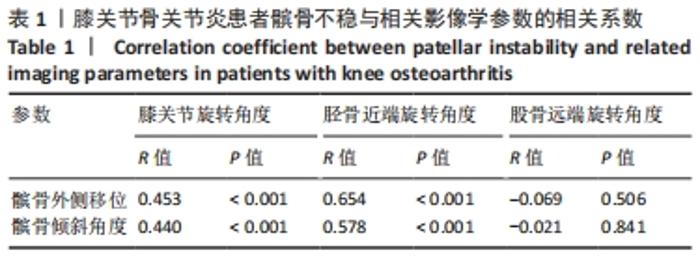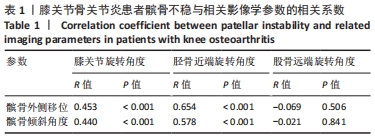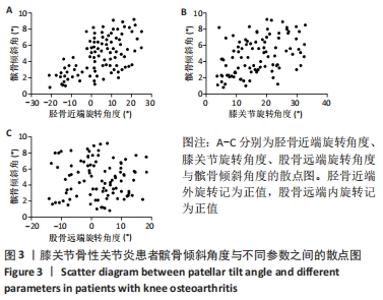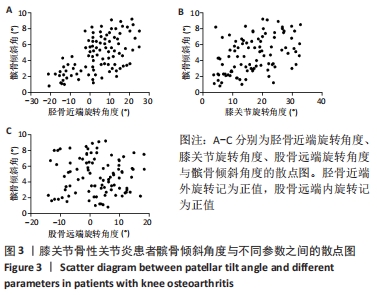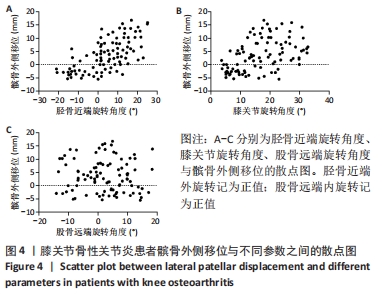[1] KOH JL, STEWART C. Patellar instability. Orthop Clin North Am. 2015; 46(1):147-157.
[2] KURODA R, NAGAI K, MATSUSHITA T, et al. A new quantitative radiographic measurement of patella for patellar instability using the lateral plain radiograph: ‘patellar width ratio’. Knee Surg Sports Traumatol Arthrosc. 2017;25(1):123-128.
[3] ASKENBERGER M, JANARV PM, FINNBOGASON T, et al. Morphology and anatomic patellar instability risk factors in first time traumatic lateral patellar dislocations. A prospective magnetic resonance imaging study in skeletally immature children. Am J Sports Med. 2017;45(1):50-58.
[4] BARZAN M, MAINE S, MODENESE L, et al. Patellofemoral joint alignment is a major risk factor for recurrent patellar dislocation in children and adolescents: a systematic review. JISAKOS. 2018;3(5):287-297.
[5] DAI Y, LI H, LI F, et al. Association of Femoral Trochlear Dysplasia and Tibiofemoral Joint Morphology in Adolescent. Med Sci Monit. 2019; 25:1780-1787.
[6] GILLESPIE D, MANDZIAK D, HOWIE C. Influence of posterior lateral femoral condyle geometry on patellar dislocation. Arch Orthop Trauma Surg. 2015;135(11):1503-1509.
[7] LIU X, JI G, WANG X, et al. CT-based morphological analysis of the posterior femoral condyle in patients with trochlear dysplasia. Knee. 2017;24(2):231-236.
[8] TANAKA MJ, D’AMORE T, ELIAS JJ, et al. Anteroposterior distance between the tibial tuberosity and trochlear groove in patients with patellar instability. Knee. 2019;26(6):1278-1285.
[9] SNOW M. Tibial Torsion and Patellofemoral Pain and Instability in the Adult Population: Current Concept Review. Curr Rev Musculoskelet Med. 2021;14(1):67-75.
[10] NOONAN B, COOPER T, CHAU M, et al. Rotational Deformity-When and How to Address Femoral Anteversion and Tibial Torsion. Clin Sports Med. 2022;41(1):27-46.
[11] ABADIE P, GALAUD B, MICHAUT M, et al. Distal femur rotational alignment and patellar subluxation: a CT scan in vivo assessment. Orthop Traumatol Surg Res. 2009;95(4):267-271.
[12] LIN YF, JAN MH, LIN DH, et al. Different effects of femoral and tibial rotation on the different measurements of patella tilting: An axial computed tomography study. J Orthop Surg Res. 2008;3:5.
[13] CHASSAING V, VENDEUVRE T, BLIN JL, et al. How tibial tubercle torsion impacts patellar stability: A biomechanics study. Orthop Traumatol Surg Res. 2020;106(3):495-501.
[14] 张权,黄煌渊,陈世益.胫骨扭转畸形与髌骨不稳[J].中华骨科杂志,1999,19(4):218.
[15] FOUILLERON N, MARCHETTI E, AUTISSIER G, et al. Proximal tibial derotation osteotomy for torsional tibial deformities generating patello-femoral disorders. Orthop Traumatol Surg Res. 2010;96(7):785-792.
[16] LEE TQ, MORRIS G, CSINTALAN RP. The influence of tibial and femoral rotation on patellofemoral contact area and pressure. J Orthop Sports Phys Ther. 2003;33(11):686-693.
[17] KAISER P, LOTH F, ATTAL R, et al. Static patella tilt and axial engagement in knee extension are mainly influenced by knee torsion, the tibial tubercle-trochlear groove distance (TTTG), and trochlear dysplasia but not by femoral or tibial torsion. Knee Surg Sports Traumatol Arthrosc. 2020;28(3):952-959.
[18] WHITE AE, OTLANS PT, HORAN DP, et al. Radiologic Measurements in the Assessment of Patellar Instability: A Systematic Review and Meta-analysis. Orthop J Sports Med. 2021;9(5):2325967121993179.
[19] BOUTRIS N, DELGADO DA, LABIS JS, et al. Current evidence advocates use of a new pathologic tibial tubercle-posterior cruciate ligament distance threshold in patients with patellar instability. Knee Surg Sports Traumatol Arthrosc. 2018;26(9):2733-2742.
[20] BARAHONA M, GUZMÁN M, BARRIENTOS C, et al. Collaborating Authors. The Distance between Tibial Tubercle and Trochlear Groove Correlates with Knee Articular Torsion. J Knee Surg. 2021;34(9):918-923.
[21] MARQUEZ-LARA A, ANDERSEN J, LENCHIK L, et al. Variability in patellofemoral-alignment measurements on MRI: influence of knee position. AJR Am J Roentgenol. 2017;208(5):1097-1102.
[22] KAISER P, SCHMOELZ W, SCHÖTTLE PB, et al. Isolated medial patellofemoral ligament reconstruction for patella instability is insufficient for higher degrees of internal femoral torsion. Knee Surg Sports Traumatol Arthrosc. 2019;27(3):758-765.
[23] SCHRÖTER S, NAKAYAMA H, IHLE C, et al. Torsional Osteotomy. J Knee Surg. 2020;33(5):486-495.
[24] FRITZ B, BENSLER S, LEUNIG M, et al. MRI Assessment of Supra- and Infratrochanteric Femoral Torsion: Association With Femoroacetabular Impingement and Hip Dysplasia. AJR Am J Roentgenol. 2018;211(1): 155-161.
[25] KIM HY, KIM KJ, YANG DS, et al. Screw-Home Movement of the Tibiofemoral Joint during Normal Gait: Three-Dimensional Analysis. Clin Orthop Surg. 2015;7(3):303-309.
[26] SCHORN D, YANG-STRATHOFF S, GOSHEGER G, et al. Long-term outcomes after combined arthroscopic medial reefing and lateral release in patients with recurrent patellar instability - a retrospective analysis. BMC Musculoskelet Disord. 2017;18(1):277.
[27] CIVAN O, SANCMIS M, TOPCUOGLU N, et al. Long-term results of arthroscopic medial reefing for patellar instability. Knee. 2020;27(4): 1182-1189.
[28] PAULOS L, SWANSON SC, STODDARD GJ, et al. Surgical correction of limb malalignment for instability of the patella: a comparison of 2 techniques. Am J Sports Med. 2009;37(7):1288-1300.
|
